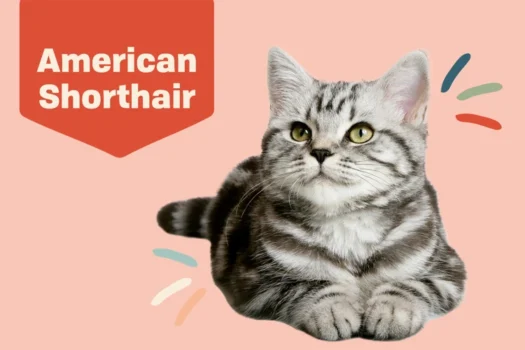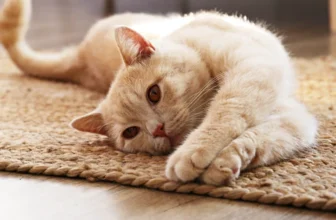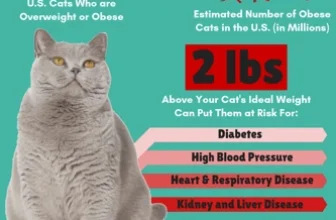Introduction
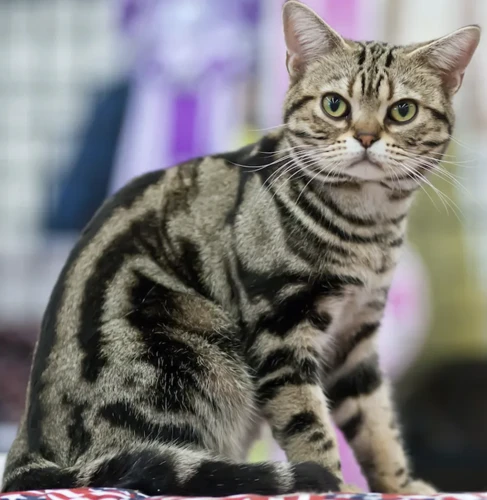
Taking care of your cat’s dental health is crucial for their overall well-being. Many pet owners underestimate the importance of maintaining their cat’s oral hygiene, which can lead to serious dental problems such as gum disease, tooth decay, and even infection. In this article, we will focus specifically on American Shorthair cats, and provide you with tips and tricks to help spot dental problems early on, as well as ideas for prevention and treatment. Keep reading to ensure your feline friend’s pearly whites stay clean and strong!
Why Dental Care is Important for Cats
Cats are prone to dental problems and, if left untreated, these issues can escalate quickly and become severe. Dental care is vital for maintaining the overall health of cats, including American Shorthair cats. Dental problems can lead to infection, pain, and tooth loss. In severe cases, they can even cause kidney, liver, or heart disease.
Dental issues are common in American Shorthair cats. This breed is known for its tendency towards periodontal disease due to their short jaws and crowded teeth, which makes it harder to clean their teeth effectively. Dental care is especially essential for American Shorthair cats to prevent and treat dental problems.
Maintaining good dental hygiene in American Shorthair cats can be challenging, but it is worth the effort. Proper dental care can add years to your cat’s life and improve their quality of life, preventing many other health conditions. Regular dental checkups, a balanced diet, and healthy dental hygiene habits can make a significant difference in preventing or reducing the severity of dental issues in American Shorthair cats.
| Health Condition | Description |
|---|---|
| Feline Lower Urinary Tract Disease | Affects the bladder and urethra of cats, causing difficulty urinating and pain. |
| Preventing Obesity | Provides tips and strategies for helping your American Shorthair cat maintain a healthy weight. |
| Asthmatic Cats | Management tips for cats with asthma, a condition that affects breathing. |
| Regular Wellness Checkups | Importance of scheduling preventive care visits for your cat. |
| Feline Arthritis Management | Ways to manage and treat arthritis in American Shorthair cats. |
| Feline Infectious Diseases | Common infectious diseases that affect cats and how to prevent them. |
| Allergies in Sh Cats | Symptoms and treatment for allergies in American Shorthair cats. |
| Managing Hairballs | Tips for preventing and treating hairballs in American Shorthair cats. |
| Treating Dehydration | What to look for and how to treat dehydration in cats. |
Regular dental care is one aspect of overall cat health care, alongside scheduling preventive care visits, managing weight, and monitoring allergies. It is essential to work with your veterinarian to develop a personalized care plan for your American Shorthair cat, taking into account their breed, age, and overall health.
Signs and Symptoms of Dental Issues
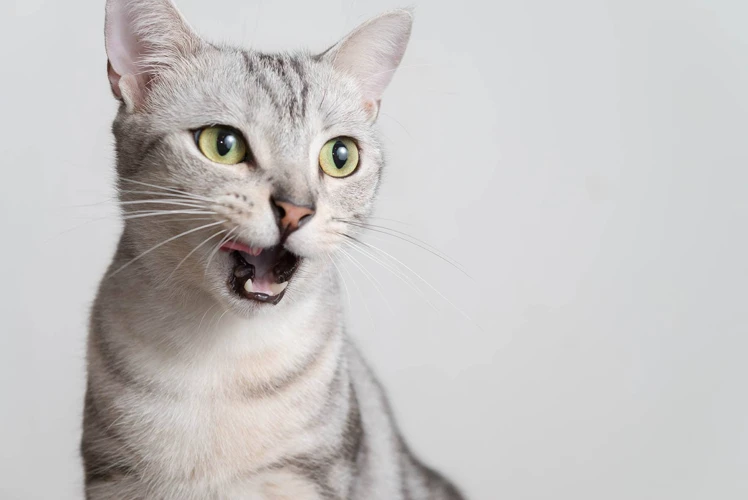
It’s important to pay attention to your American Shorthair cat’s dental health, as dental issues can lead to more serious health problems. Noticing the signs and symptoms of dental issues is crucial in catching them early on and seeking treatment. Some of these signs may also be indicators of other health concerns, such as feline lower urinary tract disease or asthma. In this section, we’ll go over some common signs and symptoms of dental problems in American Shorthairs to look out for.
Bad Breath
One of the most noticeable signs of dental issues in American Shorthair Cats is bad breath. While it’s normal for your cat to have slightly stinky breath, especially after eating something smelly, constant bad breath can indicate a more serious issue, such as periodontal disease or tooth decay.
To spot bad breath in your cat, try to get up close to her face and take a whiff. If the smell is particularly strong or unpleasant, it’s likely that your cat has dental problems that need treatment. Additionally, if your cat is avoiding close contact or brushing her head away when you try to sniff her breath, it could be another sign that something is wrong.
It’s important to note that bad breath is not always the only symptom of dental issues, and other signs should be looked out for as well. If you suspect your cat has dental problems, consider bringing her to a veterinarian for a dental check-up.
| Causes of Bad Breath in Cats | How to Address Them |
|---|---|
| Poor Oral Hygiene | Establish a dental hygiene routine, including regular brushing and professional cleanings as recommended by your veterinarian. |
| Tooth Decay or Gum Disease | These issues may require treatment, such as a tooth extraction or gum surgery, depending on the severity of the condition. |
| Diet | Switching your cat to a dental-friendly diet or incorporating dental chews/treats into their routine can help reduce bad breath and support overall dental health. |
If left untreated, dental issues can lead to severe health problems and discomfort for your cat. As such, it’s important to keep an eye out for symptoms like bad breath and seek veterinary care if necessary. In addition to regular dental check-ups, there are steps you can take to prevent dental issues from developing in the first place, including establishing a good oral hygiene routine and choosing dental-friendly food and treat options.
Internal link: For more information on the importance of regular wellness check-ups for cats, check out our article on the subject.
Facial Swelling or Discomfort
Facial swelling or discomfort can be a sign of a severe dental issue in American Shorthair Cats. If you notice your cat has facial swelling or discomfort, take them to the vet immediately as this could be a sign of an abscessed tooth or gum disease. Swelling of the face or gums indicates an infection or inflammation, and if not treated promptly, it can lead to more severe complications.
Your veterinarian will typically perform a thorough oral examination on your cat, which may include dental x-rays, to determine the underlying cause of the swelling. Treatment of the swelling will depend on the cause, but in most cases, your vet may recommend antibiotics, pain relief medications, and further dental treatment.
If left untreated, facial swelling or discomfort can lead to tooth loss, bone damage, and impact your cat’s overall health and quality of life, so it is crucial to seek immediate medical attention if you notice any signs of swelling or discomfort in your cat’s face or gums.
In addition to taking your cat to the vet regularly for dental check-ups and cleaning, you can prevent dental issues that lead to facial swelling or discomfort by providing your cat with a healthy diet and avoiding sugary treats. You can also consider providing your cat with dental chews that promote clean teeth and gums. Preventing dental issues will keep your American Shorthair Cat healthy and thriving for years to come.
Internal link: Feline Infectious Diseases and American Shorthair Cats’ Health
Bleeding, Red or Inflamed Gums
Bleeding, red, or inflamed gums are another indicator of dental issues in American Shorthair cats. Often, this occurs when food and bacteria build up along the gum line, leading to gum disease. As a result, the gums will be tender, swollen, and may bleed when touched. One way to check your cat’s gums is to gently lift their lip and inspect the gum color. Normally, the gums should be a light pink color, without any visible inflammation.
If you notice your cat’s gums are bleeding or inflamed, it’s essential to take action as soon as possible to prevent further dental problems. Schedule a dental check-up appointment with your veterinarian for a proper diagnosis. During the check-up, the vet may perform a dental cleaning, a full dental exam, and x-rays to determine the root cause of the issue.
There are several potential reasons for red or swollen gums, such as dental decay, gum disease, or even an underlying health problem. In some cases, gingivitis, which is the earliest stage of gum disease, can be reversible with proper veterinary treatment. However, if left untreated, it can quickly progress and develop into something more serious, such as periodontitis, which can cause tooth loss and even impact organs’ functioning.
To prevent bleeding, as well as red and inflamed gums, proper dental care is vital. This includes regular brushing and professional dental cleanings. Additionally, feeding your cat a dental diet or providing dental chews can provide some protection against the formation of plaque and tartar buildup. It’s also essential to avoid table scraps, which can lead to plaque buildup and dental decay.
To learn more about how to prevent dental problems in American Shorthair cats, check out our article on preventing obesity in American Shorthair Cats for tips and strategies on maintaining your cat’s healthy weight, which can also help prevent against dental issues.
Difficulty Eating or Chewing
One of the signs that your American Shorthair cat may have dental issues is difficulty eating or chewing. This can manifest as a reluctance to eat or a decrease in appetite altogether. If your cat does eat, they may show signs of pain or discomfort while chewing, such as pawing at their mouth or making unusual sounds while eating.
To determine if your cat is having trouble eating or chewing due to dental problems, observe their eating behavior closely. If they are favoring one side of their mouth or avoiding certain types of food, this could be a sign of pain or discomfort. Additionally, watch for drooling or dropping food out of their mouth while eating, as this can also be an indicator of dental problems.
If you suspect your American Shorthair cat is experiencing difficulty eating or chewing, it is important to consult with your veterinarian as soon as possible. Dental problems can worsen over time and lead to other health issues, so early detection and treatment are essential. Your veterinarian may perform a comprehensive oral examination and recommend X-rays to identify any underlying dental issues.
Treatment for difficulty eating or chewing will depend on the underlying cause. In some cases, dental cleaning or extractions may be necessary to address issues such as gum disease or tooth decay. Your veterinarian may also recommend a special diet that is easy for your cat to chew and swallow or prescribe pain medication to help manage discomfort.
As with all aspects of your cat’s health, prevention is key to avoiding difficulty eating or chewing related to dental problems. Regular dental check-ups, tooth brushing, and a dental-friendly diet can help maintain your cat’s oral health and prevent future dental issues. Additionally, managing hairballs and considering your cat’s joint health, such as feline arthritis management, can also play a role in promoting overall health and wellbeing.
Prevention and Treatment of Dental Issues
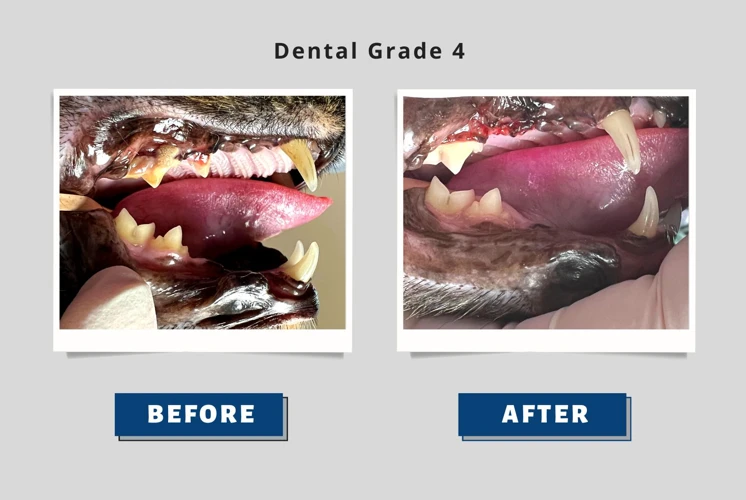
Dental issues in American Shorthair cats can be a major concern for pet parents, but with proper prevention and treatment, they can be avoided or managed effectively. It is crucial to take good care of your cat’s dental health, as it can affect their overall well-being and lead to serious health problems in the future. In this section, we will discuss some preventive measures and treatment options to help you maintain your feline friend’s dental hygiene. Let’s explore some of the tips and tricks for ensuring your American Shorthair’s dental health.
Regular Dental Check-Ups
Regular dental check-ups are essential for keeping your American Shorthair cat’s teeth and gums healthy. Just like humans, cats too need regular dental check-ups. A routine dental check-up can detect any dental issues before they become severe problems. During the check-up, the veterinarian will examine your cat’s teeth, gums, and mouth for any signs of dental disease or decay. They will also evaluate any unusual growths or lumps in and around the mouth.
It is recommended to schedule a dental check-up for your cat every six months. This allows the veterinarian to monitor your cat’s dental health more closely and catch any problems early. During the check-up, the veterinarian will also offer advice on keeping your cat’s teeth and gums healthy.
Regular dental check-ups can also help identify any causing factors of bad breath, which may not always be dental decay. If your cat’s bad breath is caused by underlying conditions such as kidney disease or diabetes, your veterinarian can help you find the best course of action to keep those conditions in check.
Regular dental check-ups are especially important for older cats and those with pre-existing conditions. These cats are more susceptible to dental disease and its complications.
By taking your American Shorthair cat for regular dental check-ups, you can prevent dental issues from becoming severe and avoid costly dental treatments down the road.
Internal HTML link: allergies in American Shorthair cats
Brushing Your Cat’s Teeth
Keeping your American Shorthair’s teeth clean is essential for the prevention of dental problems. One of the most effective ways to maintain good oral hygiene is to brush your cat’s teeth regularly. However, it’s important to approach teeth brushing with care and consideration.
How to Brush Your Cat’s Teeth
| Step | Instruction |
|---|---|
| Step 1 | Choose a time when your cat is calm and relaxed, such as after a meal or nap. |
| Step 2 | Introduce your cat to the toothbrush by letting them sniff and lick it. You can also give them a small amount of cat toothpaste to taste. |
| Step 3 | Gently lift your cat’s lip to expose their teeth and gums. |
| Step 4 | Hold the toothbrush at a 45-degree angle to the teeth and brush in a circular motion. Be sure to brush both the outer and inner surfaces of the teeth, as well as the gum line. |
| Step 5 | Give your cat a reward, such as a favorite treat or toy, after brushing to create a positive association with the experience. |
Choosing the Right Toothbrush and Toothpaste
When it comes to choosing a toothbrush and toothpaste for your American Shorthair, it’s important to select products that are specifically designed for cats. Human toothpaste can be harmful to cats, as it contains ingredients such as fluoride that can upset their stomachs. Instead, opt for a toothbrush with soft bristles and enzymatic toothpaste made for cats.
Frequency of Brushing
It’s recommended to brush your cat’s teeth at least two to three times a week to maintain good oral hygiene. However, for cats that are prone to dental problems, more frequent brushing may be necessary. As with any new routine, it’s important to introduce teeth brushing gradually to avoid overwhelming your cat.
Remember, keeping your American Shorthair’s teeth clean and healthy is an essential part of their overall health and well-being. By following these simple steps for teeth brushing, you can help prevent dental problems and ensure your cat’s continued health and happiness.
Dental Diets and Chews
Dental Diets and Chews are specially formulated foods that can help promote oral health in cats. These diets and chews can help to remove plaque and tartar buildup, as well as freshen breath, keeping your cat’s teeth and gums healthy.
One type of dental diet is the prescription diet, which requires a prescription from your veterinarian. These diets are designed to help prevent or treat dental problems in cats. They typically contain larger kibble sizes or a special coating that helps to scrub teeth as your cat chews.
Another type of dental diet is the over-the-counter diet. These diets can also help promote good oral health but are not as effective as prescription diets. They may contain enzymes that help break down plaque and tartar buildup or have a special texture that helps to clean teeth.
Dental chews are another option to promote oral health in cats. They can be used as a supplement to regular brushing or as a standalone option for cats that do not tolerate brushing. Dental chews come in various shapes and formulations, including rawhide, vegetable-based, and enzymatic chews. They work by mechanically removing plaque and tartar as your cat chews on them and can be a tasty treat for your feline friend.
It is important to note that while dental diets and chews can help promote oral health, they should not be the sole means of dental care for your cat. Regular dental check-ups and daily tooth brushing are still essential for maintaining your cat’s oral health and preventing dental problems.
If your cat is not drinking enough water, you might want to find information on how to tackle dehydration issues. Check our article on treating dehydration in shorthair cats.
Treatment Options for Existing Dental Problems
If your American Shorthair cat is already experiencing dental problems, there are several treatment options available that you can discuss with your veterinarian to determine the best course of action. Here are some of the most common treatment options for existing dental problems:
- Professional teeth cleaning: In cases of advanced dental disease, your veterinarian may recommend a professional teeth cleaning under anesthesia. During this procedure, your cat’s teeth will be cleaned, scaled, and any infected teeth will be removed.
- Antibiotics: If your cat has an infection or advanced gum disease, antibiotics may be prescribed to help clear up the infection and prevent it from spreading.
- Tooth extraction: In some cases, a damaged or infected tooth may need to be extracted to prevent further pain and discomfort for your cat. This is typically done under anesthesia.
- Oral surgery: In severe cases of dental disease, oral surgery may be required to treat the issue and prevent further damage to your cat’s teeth and gums.
- Medication: Your veterinarian may also prescribe medication to help manage your cat’s pain and discomfort from dental issues. Always follow your veterinarian’s instructions and make sure to finish the full course of medication.
It’s important to note that treatment for dental problems will vary depending on the severity of the issue and the individual needs of your cat. If you notice any signs or symptoms of dental problems, it’s important to schedule a check-up with your veterinarian as soon as possible to determine the best course of action for your furry friend.
How to Make Dental Care Easier for Your American Shorthair
Taking care of your American Shorthair’s dental health may seem like a daunting task, but there are many ways to make it easier for both you and your feline friend. From starting early to using positive reinforcement, there are numerous strategies you can employ to make dental care a breeze. In this section, we will explore some ways to make dental care easier for your American Shorthair and ensure your cat’s oral health is in tip-top shape.
Start Young and Slow
When it comes to incorporating dental care into your American Shorthair’s routine, starting young is crucial. This will help them become accustomed to the process, making it easier for you to maintain their dental health as they get older. It’s important to introduce brushing slowly and gradually, so as not to overwhelm your cat.
Steps to start young and slow:
| Step | Description |
|---|---|
| 1 | Introduce your cat to the toothbrush and toothpaste. First, let them sniff and play with the toothbrush and toothpaste. This will help them become familiar with these new objects that will soon become a part of their routine. |
| 2 | Start by using your finger. Once your cat is comfortable with the toothbrush and toothpaste, try rubbing some of the toothpaste on your finger and gently introducing it to your cat’s mouth. This will help them become accustomed to the sensation of having their teeth touched. |
| 3 | Gradually switch to a toothbrush. After your cat has become accustomed to having their teeth touched, you can begin to use a toothbrush. Start by using a soft-bristled toothbrush and apply only slight pressure to avoid hurting your cat’s gums. Brush in a circular motion, focusing on the outer surfaces of the teeth where most of the plaque builds up. |
| 4 | Be patient and use positive reinforcement. Remember to be patient and always use positive reinforcement, like treats or praise, to reward good behavior. This will help your cat associate dental care with positive experiences and make the process easier for both you and your cat. |
It’s important to remain calm and patient throughout this process, as your cat may initially resist having their teeth brushed. Remember to always end on a positive note, even if you only manage to brush a few teeth at first. By starting young and slow, you are setting your American Shorthair up for a lifetime of good dental health.
Use Positive Reinforcement
One effective way to make dental care more pleasant for your American shorthair cat is to use positive reinforcement. This means rewarding your cat for good behavior during teeth brushing or other dental care activities. Here are some tips for using positive reinforcement in your dental care routine:
- Use treats: By offering your cat a small treat or other reward after each successful teeth brushing session, you can help create positive associations with the activity.
- Offer praise: In addition to treats, you can also offer verbal praise or petting to your cat when they allow you to brush their teeth or otherwise participate in dental care activities.
- Take breaks: If your cat seems overwhelmed or stressed during dental care, take a break and try again later. Consistency is important, but it’s also important to avoid overwhelming your pet.
- Be patient: Dental care can be a challenge for some cats, especially if they aren’t used to the activity. Be patient and persistent, and over time your cat may become more comfortable with dental care.
By using positive reinforcement and offering treats and praise, you can help make dental care a more enjoyable experience for your American shorthair cat. Remember to be patient and persistent, and don’t hesitate to seek professional help if you’re struggling with your cat’s dental care.
Consider Professional Cleaning
Regular dental check-ups and at-home dental care can prevent many dental issues in American Shorthair cats. However, sometimes professional cleaning may be necessary to treat existing dental problems. Professional cleaning involves scaling, polishing, and potentially extractions under anesthesia.
Scaling: This is the removal of plaque and tartar from the teeth. Your veterinarian will use a dental scaler to remove the build-up above and below the gumline. Scaling is an important step in preventing gum disease, which can lead to tooth loss and other health issues.
Polishing: After scaling, your veterinarian will polish the teeth to smooth out any rough areas where bacteria can accumulate. Polishing also makes the teeth look shiny and clean.
Extractions: Sometimes, damaged or diseased teeth can’t be saved and need to be extracted. This is typically done under anesthesia to reduce pain and stress to your cat.
Professional cleaning is a safe and effective way to improve your American Shorthair’s dental health. However, it can be expensive, with the cost varying depending on your location and the extent of the treatment required.
It’s important to note that professional cleaning is not a replacement for regular dental check-ups and at-home dental care. Rather, it is a complementary treatment that can address existing dental problems. It’s also important to follow up with regular at-home dental care after professional cleaning to maintain your cat’s oral health.
If you’re considering professional cleaning for your American Shorthair, talk to your veterinarian about the best options for your cat’s specific needs. They can provide guidance on the frequency of cleanings and the best methods for at-home dental care.
Conclusion
Taking care of your American Shorthair’s dental health is extremely important for their overall well-being and longevity. Dental problems can lead to infections, pain, and difficulty eating, which can significantly impact your cat’s quality of life.
By being aware of the signs and symptoms of dental issues, you can catch potential problems early and take steps to prevent them from progressing. Regular dental check-ups, brushing your cat’s teeth, and providing dental diets and chews are all great ways to keep your cat’s teeth healthy and strong.
If your cat is already experiencing dental issues, there are a variety of treatment options available, including tooth extractions, root canals, and other specialized procedures. It’s important to work with your veterinarian to determine the best course of action for your individual cat.
When it comes to making dental care easier for your American Shorthair, starting young and using positive reinforcement can be extremely effective. Many cats may also benefit from professional cleaning by a veterinarian, which can help remove built-up plaque and tartar.
Overall, taking care of your cat’s dental health is an investment in their long-term health and happiness. By staying proactive and providing the necessary care and attention, you can help ensure that your American Shorthair has a healthy mouth and a beautiful smile for years to come.
Frequently Asked Questions
What are some common dental problems in American Shorthair cats?
Common dental problems in American Shorthair cats include periodontal disease, tooth decay, and gingivitis.
Why is dental care important for cats?
Dental care is important for cats because it helps prevent painful dental problems and ensures they can eat and drink comfortably.
Can bad breath be a sign of dental issues in cats?
Yes, bad breath can be a sign of dental issues in cats, such as periodontal disease or infections.
How often should I take my American Shorthair cat to the vet for dental check-ups?
It’s recommended to take your cat for dental check-ups at least once a year, or more frequently if they are prone to dental issues.
Is it safe to use human toothpaste on cats?
No, it is not safe to use human toothpaste on cats, as it can contain ingredients that are toxic to them. Use cat-specific toothpaste instead.
How can I get my American Shorthair cat to accept teeth brushing?
You can start by introducing your cat slowly to teeth brushing, rewarding them with treats and praise to create a positive association with the process. Gradually increase the duration and frequency of teeth brushing over time.
Are dental diets and chews effective in preventing dental issues in cats?
Yes, dental diets and chews can be effective in preventing dental issues in cats, as they help remove plaque and tartar buildup.
What are some alternative treatment options for dental issues in cats?
Alternative treatment options for dental issues in cats include water additives, oral gels, and dental rinses. However, consult with your vet before trying any new treatment on your cat.
Can professional dental cleaning be performed under sedation?
Yes, professional dental cleaning in cats is often performed under sedation to keep them calm and comfortable during the procedure.
What if my American Shorthair cat already has existing dental problems?
If your cat already has existing dental problems, it’s important to take them to the vet for treatment options, which may include extractions, antibiotics, or other medical interventions.

